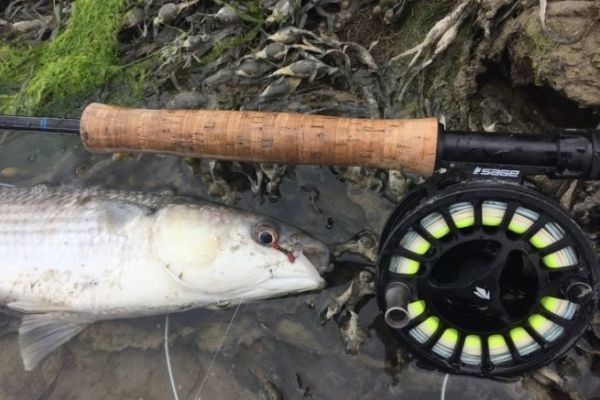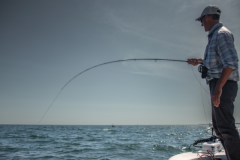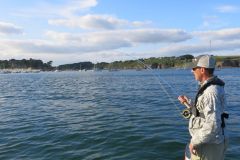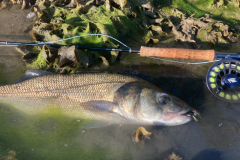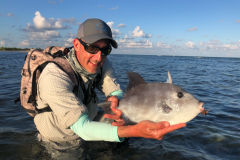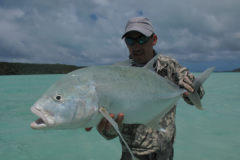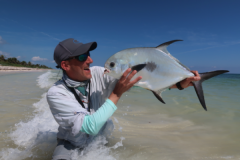Several species of mullet live together on our coasts
In France, we have three species of mullet that also frequent most sea bass habitats.
Mullets feed on small prey and/or graze on rocks and seaweed, and come to mudflats to eat small worms and crustaceans.
The three species of interest to us are the golden mullet ( chelon auratus ), easily recognized by its yellow spot on the operculum, the lippled or large-lipped mullet ( chelon labrosus ), but the small-lipped mullet ( chelon ramada ). All three can take the fly.
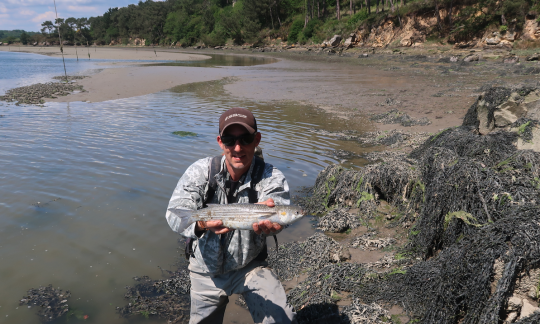
Mullet are gregarious fish that move in search of food with the tides, whether at sea (especially on beaches), on the coast or in estuaries.
The ones we're interested in are the ones that come in little water, often on the way up, but also on the way down on certain spots. In this case, they really come to feed and compete for food. All three species of mullet can be found on the same fishing grounds, and it's not easy to identify them at first.
Mullet have always been a difficult species to get to bite and fly-catch, for the good reason that we don't really know what they eat, the size of their prey and/or find the right flies. Several French (including Franc Ripault) and European specialists are devoting time to this. And it's a godsend for us, because nowadays with the Internet, we can benefit from advice, and from flies that have proved their worth.
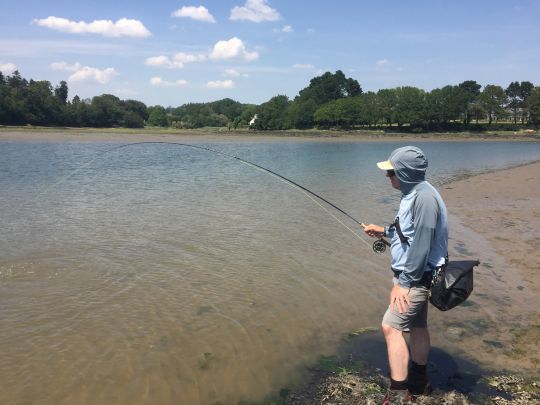
How to catch your first mullets?
I think it's easier to catch sea bass than mullet, but the mullet/sea bass ratio is clearly in favor of the mullet.
In any case, it's the fish most easily and commonly seen when strolling along seashores or estuaries, and even in towns where brackish water rises to fresh water, as in Brittany's Quimper, Vannes, Morlaix, Guingamp... And this is the case in all coastal towns crossed by an estuary.
Mullet are caught in very different ways, depending on whether they're in salt or fresh water. Here are some of the techniques I've used to catch mullet in these different environments.
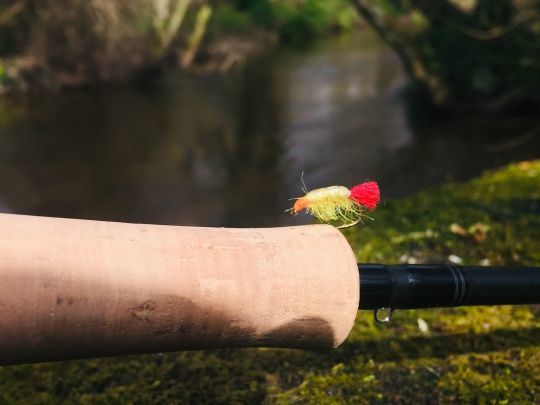
Sea and estuary fishing :
Personally, I've had some success with mullet when fishing them in little water in estuaries, especially on the incoming tide as they are concentrated and feed frenetically. For me, coefficients of 50 to 70 are the most interesting. They rise quietly on the mudflats, giving us time to present our flies.
I use four fly patterns with which I now regularly catch mullet. These are Colin Mc Leod's patterns (at least he's the one who showed them to me and told me how to use them): sand shrimp, mud shrimp, spectra shrimp and mullet bach in sizes 14 and 12. I often tie two flies. One on a tippet and the other on a stem a metre above.
Most of these flies have a red tail tag which seems to be the triggering factor and significantly increases the number of hits.
For me, they bite more for aggression than for food, because it's really hard to imitate what they eat. In fact, according to Colin, there's nothing in their stomachs except a greenish mush. Personally, I've never sacrificed a fish to study their stomach contents.
It's also noticeable that you really have to multiply your casts to get results, even though the flies are passing right in front of their noses. Proof that we're not really using what we need, and that we're having trouble finding the prey they consume on a daily basis.
Nevertheless, the more concentrated they are and in less water, the better the results. When their backs are out of the water or barely covered, and up to 20-30 cm of water, they seem to take the fly quite often. But when the water level is higher, I get the impression that they're not interested at all!
Procedure that allowed me to take mullets:
I cast my train of flies close to small shoals, upstream of their movement. If there's a current, I often let the leader drift and cast the flies close to them. In the absence of current or touch, I make very small strips (1 to 2 cm) very quickly. It's important that the flies stick to the bottom. You have to multiply the casts and quite often one of them takes your fly. The bites are clean and you can feel the tension in the leader. You need to strike very quickly to hook them, but not too hard.
Be careful to raise your rod gently before casting again to avoid stinging them with anything other than your mouth.
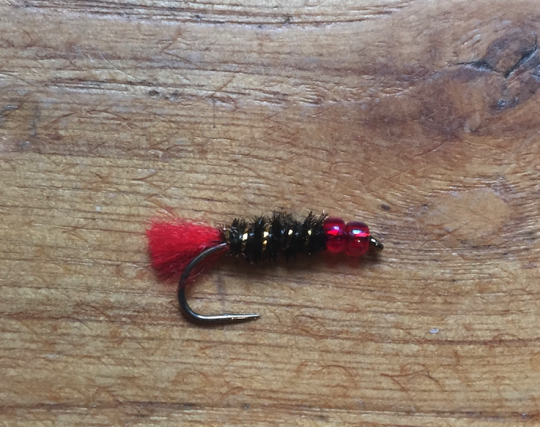
Freshwater :
In the lower reaches of coastal rivers, mules come up to feed, sometimes even very high up (tens to hundreds of kilometers). Most of the time, they're hog and red mullet. I've had some success sight-fishing for them, as I have for trout with gammare imitations and small trout nymphs with orange helmets. The main difficulty is to place your fly correctly, as they are constantly moving and changing direction. But with a little patience and determination, it's possible to catch one with this type of fly.
It's an interesting fishery and with a 4-gauge line it makes for great fights as it makes good use of the current.
I've also caught several, without looking for them, with shad flies on the lower Blavet in Morbihan. These brightly colored flies sometimes seem to attract them. These are anecdotal catches, but the proof is that they also bite in freshwater.
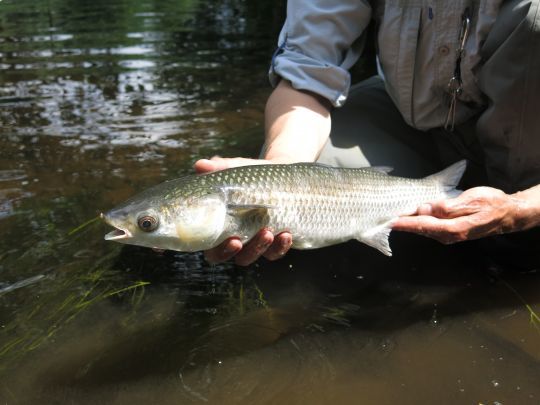
Equipment for mullet sea fishing
I personally use a 9-foot rod with a 6 silk line to search for them in estuaries.
This allows you to cast into the wind but keep a little flexibility for the strike and enjoy the fight with these relatively combative fish. On the other hand, in little water, they are much less powerful than in the current.
A 4-metre leader with a 16° to 18° fluorocarbon tip is required.
For river fishing, a 9-foot rod with a 4 or 5 line will do the trick. We fish them up close to see them take the nymph and we look for fish between 45 and 60 cm. I use a 4.5/5 m leader with a 16° to 18° tip.
Lightly weighted Gammare, orange helmeted book ear, orange helmeted pheasant brought me mullet in these conditions.

 /
/ 